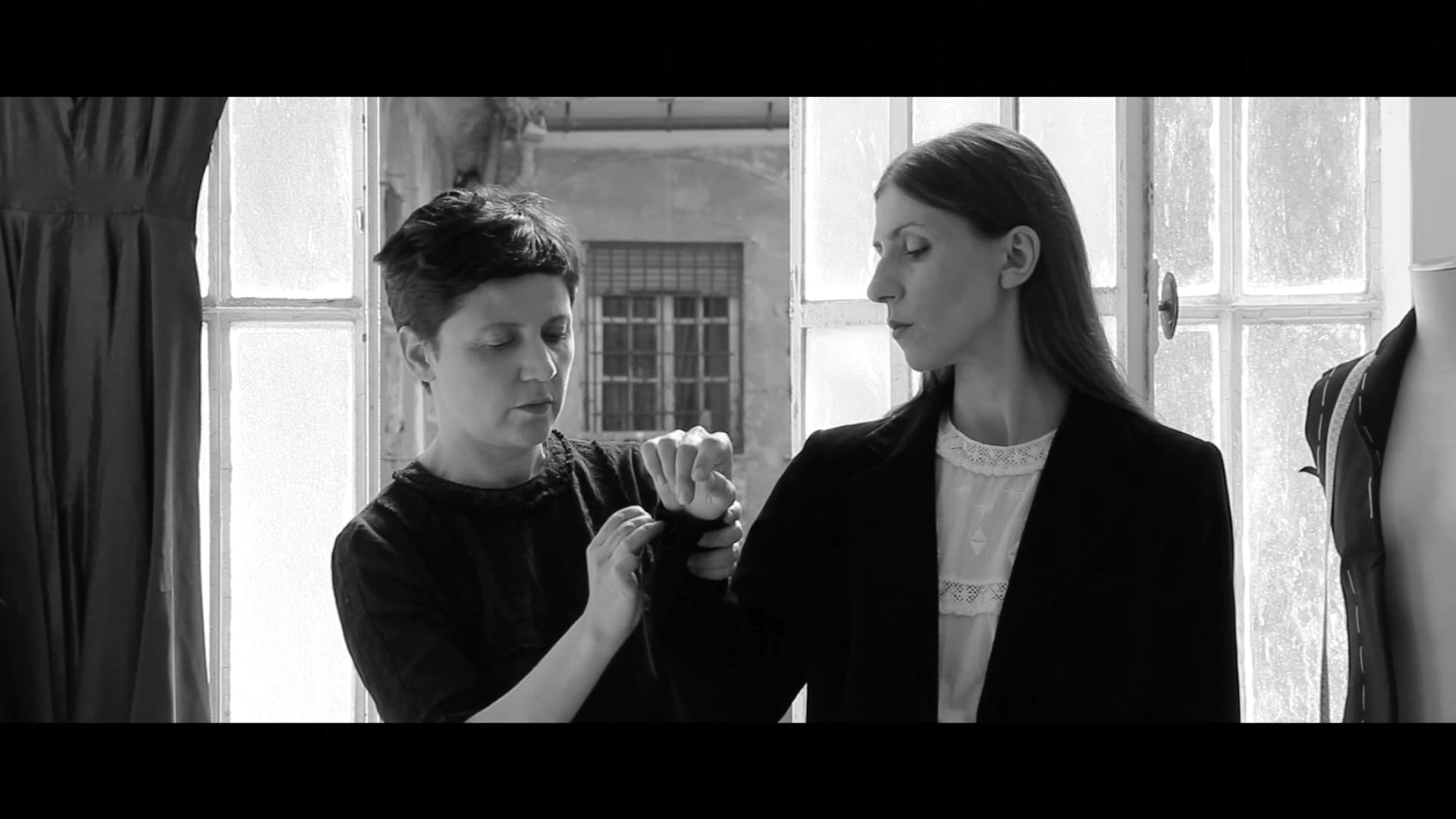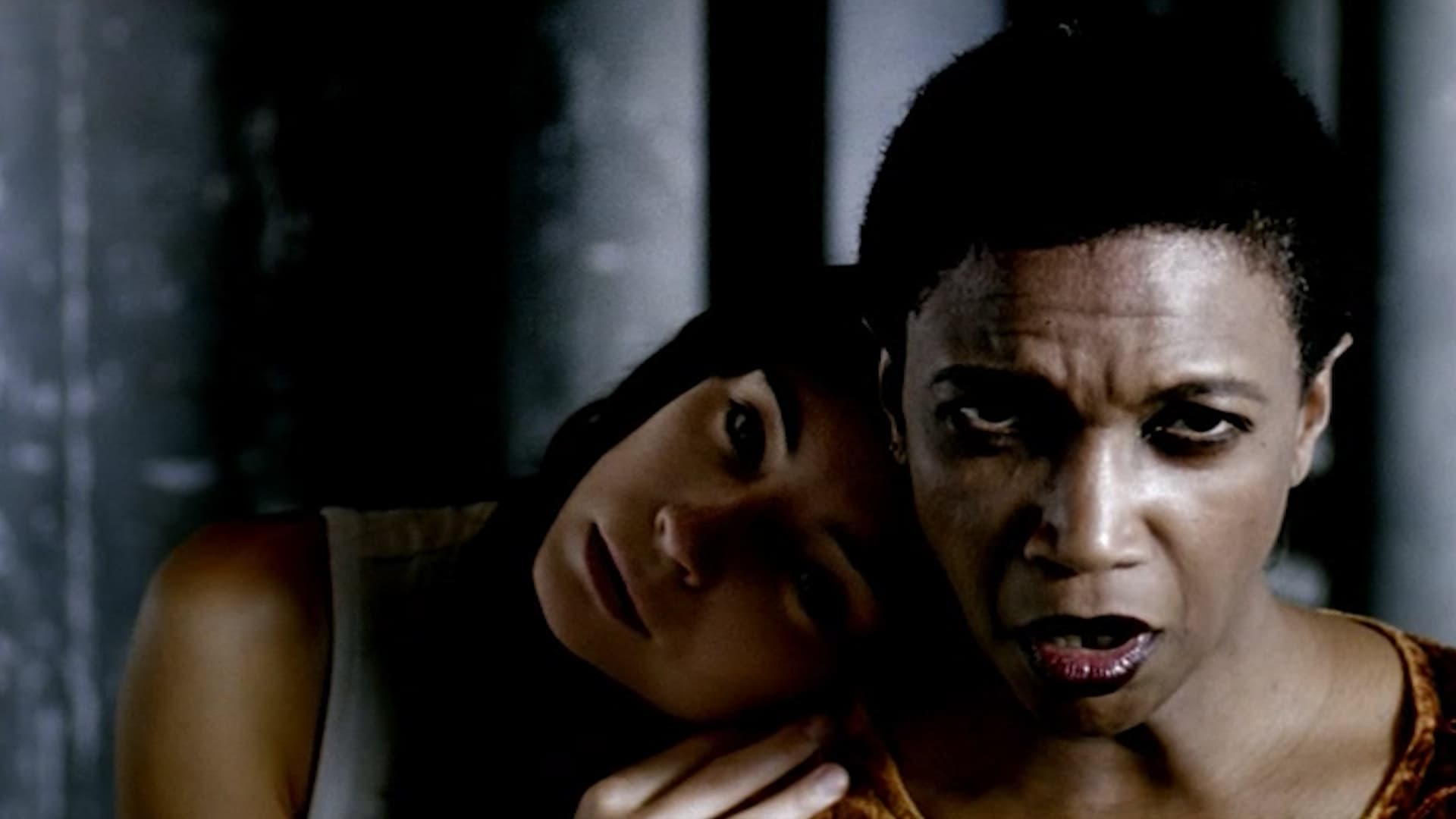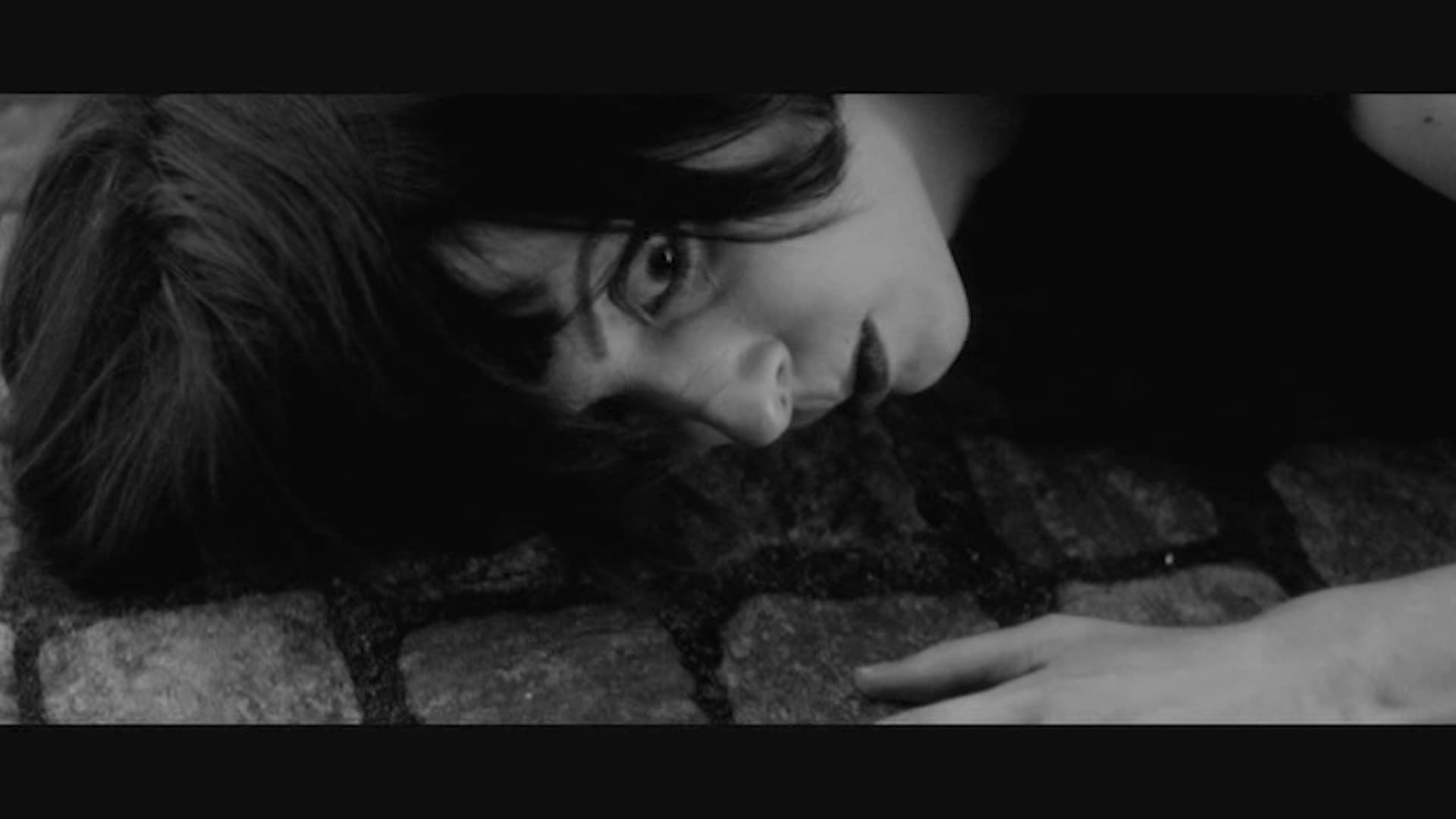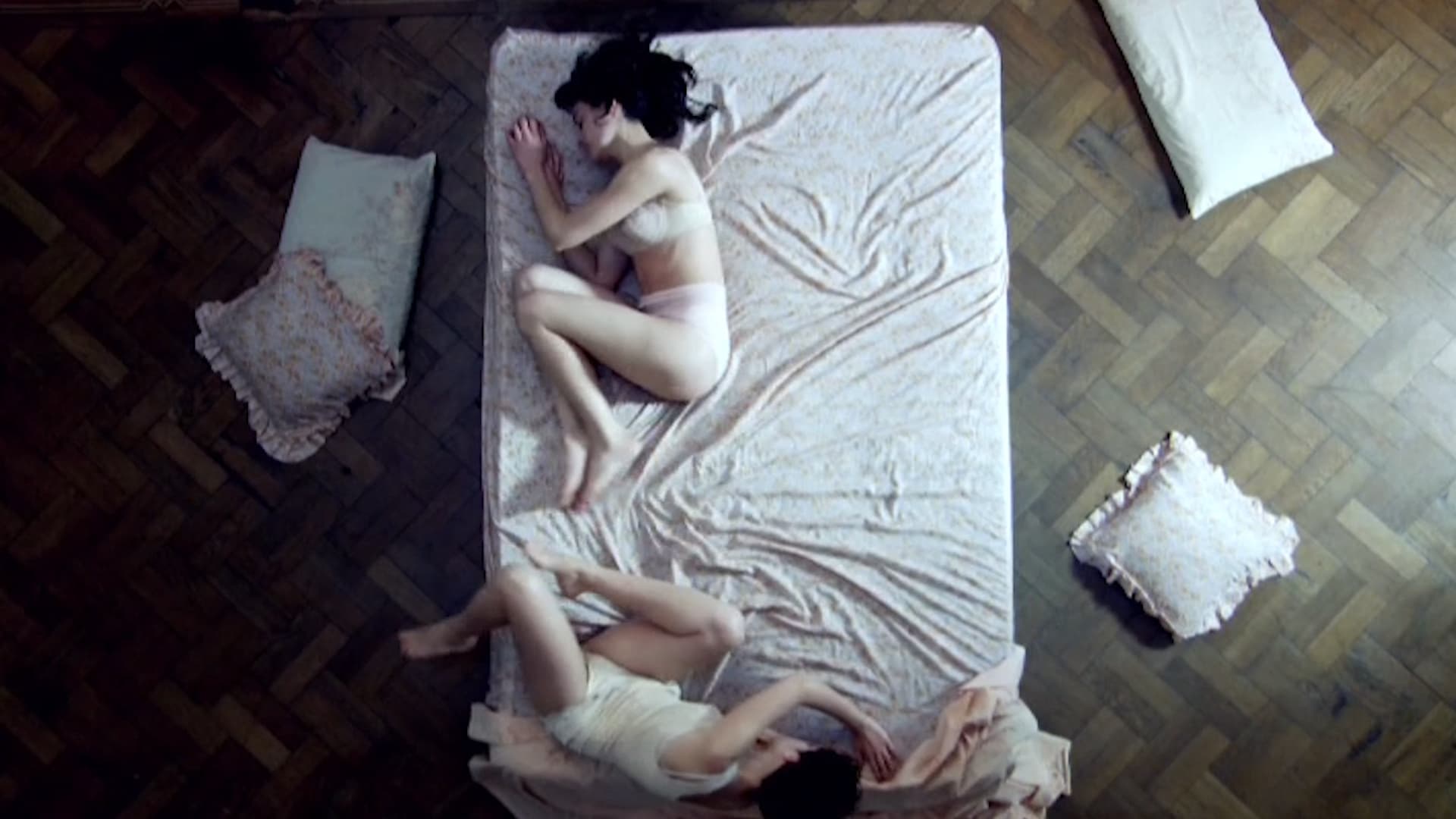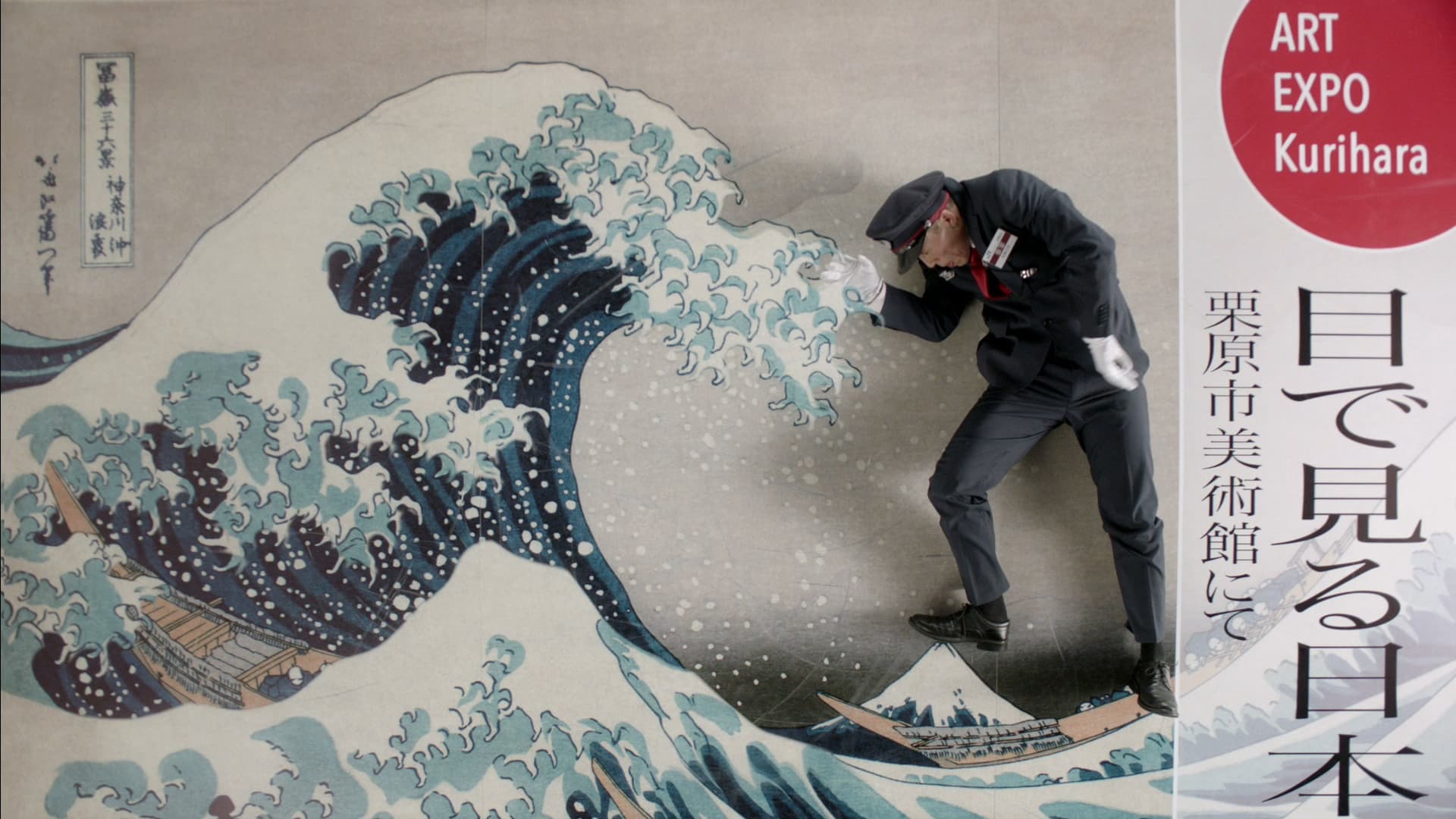TOP > 隠された物語
2020年8月26日(水)21:00〜24:00
隠された物語・5作品
Wed 26 AUG 9:00 P.M.〜12:00 A.M. JST (+UTC9)
Hidden Stories
Su misura
ス・ミズーラ 仕立て屋
1’10
監督・振付:Augenblick
イタリア 2014
ダンス映画監督たちへのメールインタビュー
A Mail Questionnair to Dance Film Directors
インタビュアー・翻訳:黒田瑞仁
まず最初に、あなた方について教えてください。どういう作品を作ってこられましたか?
Augenblick:実は私たちAugenblickは『ス・ミズーラ』以前には存在しませんでした。
ジェノバのアート集団であるAugenblickを組織するきっかけは、2014年の夏に1分ダンス映画のコンテストであるLa danza in 1 minutoに作品を投稿しようと決めたことでした。翌年トリノで開催されたこのコンテストで『ス・ミズーラ』は私たちを優勝させてくれました。Augenblickのメンバーの経歴を見渡すと、いくつかの違いや共通項を挙げることができます。Alessandra Elettra BadoinoはDanzeducatore®で、舞台美術家、パフォーマーです。Marina Giardinaはダンサーであり女優、Retedanzacontempoligure と Compagnia Filò (ダンスと演劇の中間の集団)のメンバーです。Fabio Poggiはパフォーマーであり、空間の演技性に関する論を書いて都市計画の博士号(Iuav Venice, Paris)を取得しました。Marco Longoは映像作家で、これまで幾つかのショートフィルムとウェブビデオを製作してきました。
『ス・ミズーラ』は専門と興味の交差点で私たちを待ち構えていたようなものでした。同時にAugenblickそのものも、ある連鎖の結果だと言えるでしょう。ちょうどドミノ倒しのようなことが起こったのです。2014年8月にFabioがMarinaにLa danza in 1 minutoのことで電話をしました。Marinaは興味を持ち、Alessandraをプロジェクトに引き入れてはどうかと考えました。Alessandraはさらに、彼女の友人であり若い映像作家であるMarcoのことをFabioとMariaに紹介します。Augenblickの誕生です。
タイトル『ス・ミズーラ』とはどういう意味ですか?
Augenblick:『ス・ミズーラ』はイタリア語で、服作りに関係する言葉です。英語ではtailoredもしくはtailor-madeのこと。tailoredは辞書によれば「特定の目的に従って、具体的な要求に沿う様に具体的な寸法(肩や、腰、胸などの)をもとにデザイン、裁断、縫製されたもの。」です。
この定義は私たちの興味をひき、幾つかの疑問を起こさせました。衣服(ここでは作中の人物)がどのようにして、どんなときにピッタリと誰かに合うようになるのだろうか?「完璧な仕立て」は、そもそも可能なのか?衣服にまつわる隠喩がすぐに思い浮かびました。我々にとっての最初のステップはそれらの疑問を、仕草やダンス、物語りの技術や映画製作に置き換えてみることでした。
「ス」と「ミズーラ」を組み合わせた語感も気に入りました。それはどこか遠い、異国の言葉を連想させてくれたのです。
作中では衣服が重要なモチーフになっていますね。あなたの考える衣服とダンスの関係を教えてください。
Augenblick:作品作りの出発点は、潜在的に踊りに通じるような動作や仕草をする職人仕事を探すことでした。そしてとうとう私たちは仕立て屋が試作品を裁ち縫いする手ぶりに興味深い「ダンス」を見つけたのです。腕を上げて洋服を着ようとする様にも、何かが踊りだす気配が感じられます。
『ス・ミズーラ』は衣服に関する映画ではないのですが、衣服に関係する大事なポイントがあります。日々の中で服を着たり、着替えたりすることは自分自身を再構築して、人からの印象を変化させるという点です。たとえば、2人の女性の登場人物が着る洋服は全く同じだけれど色違い。片方が黒く、片方が白い。これは異なる視点から観たときに、似ている、あるいは同じものがどう変化するのか観察し撮影するための一つの手法です。この映画そのものが視点のゲームなのです。誰が誰を観ているのでしょう?
3人の人物は仕立屋の店舗で実際に起こっていることを観ているのでしょうか。誰か一人の記憶かもしれないし、あるいは昔見た夢なのかもしれません。場所選びや空間演出法も、この現実(店舗、内部)と虚構(丘、外部)の保留状態を強調することに一役買っています。
おそらく一般の観客が見出すのは既知の映画主題である、古典的な愛の三角関係でしょう。もちろん、そうだと匂わせる要素はあります。重要なのはこの三角関係が私たちに映画的・ダンス的についてである一方、同時にそのどちらについてでもなく、その間に位置する変わった研究の機会をくれたことです。
この作品はもともとLa danza in 1 minuto(1分ダンス映画コンテスト)向けに作られたと理解しています。このような短いダンス映画を作るにあたって気をつけたのはどのような点ですか?どんな仕掛けや技術が凝らされていますか?
Augenblick:私たちの狙いはこの短編映画をシンプルだけれど緻密に作ることでした。1分間のうちに、すべての異なる視線と視点を表現するためです。くわえて『ス・ミズーラ』にはある両面性を持たせました。実は多くの観客が劇的な要素と、遊びの両方に気づいてくれ楽しんでくれています。ドラマと、コメディです。威厳を出すためにクローズアップと白黒の画面を利用しました。一方、少しだけコミカルする狙いで、毎秒幾つかのコマを落としています。
これらはパフォーマンスやダンス映画と多くの共通項を持つ、サイレント映画へのオマージュです。
もし1分間という制限がなかったら、どんな作品になっていたでしょうか?
Augenblick:もしかすると挑発的に聞こえるかもしれませんが、『ス・ミズーラ』で語られている内容は、1分間で丁度良いのだと私たちは考えています。伝えたかったのは瞬間の連続、内部と外部の地形がどこかで交わるのを垣間見ることだったのです。『ス・ミズーラ』の後で、『Still』(※訳者注 スティル、静止)という新しいダンス映画のアイディアが出てきました。そこで試みたのは、映画とダンスの境界をテーマにすることだけではありません。もっと人物の過去や未来を語ることを目指しました。ただこちらについては、まだ有効なプロモーションの手段を検討中です。尺が長く、物語のリズムを持ったまったく別のものだからです。
2014年の製作から6年という距離が作品との間にできたと思いますが、あなたのこの作品への見方は変わった部分はありますか?
「ス・ミズーラ」(2014)は幸運に恵まれた作品です。世界各国の映画祭にも選出され高い評価を受けた作品ということもありますが、私たちがこの作品を今でも見返すことがあるのは、初の共同創作だったということが一番の理由です。今見ても不思議な感覚です。この作品はチーム4人の出会いを思い出させてくれますが、それは理念の出会いでもありました。ダンスと(アレッサンドラ、マリーナとファビオは何年来かの知り合いでした)、シネマ(マルコはアレッサンドラと仕事をしたことがありました)の出会いです。その後も私たちの活動は続きした。2015年には、テアトロ・アクロポリス、RETEダンツァコンテンポリグーレ(ライブのダンスパフォーマンス)、そして私たちのチームのオーゲンブリック(ダンスフィルム部門:Stories we danceストーリーズ・ウィー・ダンス)による、コンテンポラリーダンスとビデオダンスの新しいフェスティバル「フリフォルマット」がジェノバで開催されます。2016年には、コペンハーゲン開催だった60秒フェスティバルで審査員賞と観客賞を受賞した「/si:/」を撮影しました。そして2017年には、19世紀のイタリアの詩人ウーゴ・フォスコロの危険に満ちた人生を描いた、古典的な作風とロマンチックな精神の間に生まれた新作ダンス映画を作成することができました。ストーリーズ・ウィー・ダンス/フリフォルマットのために毎年行っている作品の募集とセレクションを含め、「ス・ミズーラ」に続くすべての作品において、私たちは今でも、この最初の作品から要素や痕跡を発見し、追いかけています。それは内密・外的な情景の関係や、表現や視聴覚的視点に基づいた細部への着目、あるいは身体もしくはカメラの様式的でも装飾的でもない動作の追求で、その動作は真実やそうでなくても物語をもたらしてくれます。
Please tell us about yourself, and what kind of pieces you have made in the past.
Augenblick : In a way, there was no past for us as a group before Su misura.
The constitution of our artistic collective Augenblick in Genova actually dates back to summer 2014, when we decided to submit a dance film to La danza in 1 minuto. This is the 60 seconds videodance competition that we won the following November in Torino, just thanks to Su misura. Anyway if we focus on past activities of Augenblick’s four members, we can surely highlight some differences and some common traits as well: Alessandra Elettra Badoino is a theatrical set designer and performer, specialized as a Danzeducatore®; Marina Giardina is a dancer and actress, she’s part of Retedanzacontempoligure and Compagnia Filò (between dance and theatre); Fabio Poggi is a performer and has a PhD in Urbanism (Iuav Venice, Paris), he wrote on the performativity of space; Marco Longo is a filmmaker, he created several short films and web videos.
So, Su misura was sort of waiting for us somewhere at the crossing of all these different disciplines and interests. And Augenblick, too, can be described as the final result of a domino effect. In fact what happened was just like a domino. In August 2014 Fabio gave Marina a phone call on La danza in 1 minuto competition. Marina showed her interest and thought about involving Alessandra in the project. Alessandra subsequently informed a friend of her, Marco, a young filmmaker that Fabio and Marina had never met before... Augenblick was on its way!
What does the title Su misura mean?
Augenblick : Su misura is an Italian expression, literally linked to the act of dressmaking. Its English translation is tailored or tailor-made.
Tailored, as it is defined by the dictionary, means: made for a particular purpose, designed according to some specific requirements, on the basis of specific measurements (shoulder, waist, chest, etc.), well cut and fitted.
This meaning arose our interest, and also some questions: when and why does a dress (here, role) fit perfectly on someone? Is this “perfect fitting” a real possibility? The dress metaphor was immediately evident, that’s why our first step has then been to switch those questions into a new research on gesture, dance, storytelling and filmmaking.
What we also liked is the sound of those two words put together, su and misura, as they reminded us of a somewhat far, foreign language.
Clothing seems to be an important motif of the film. What is your point of view on the relation between dance and clothing?
Augenblick : An important starting point for Su misura was the search of artisanal jobs whose movements and gestures potentially suggest a dancing attitude. This is how we found an interesting “dance” in the way a tailor uses his hands while sewing or cutting a sample. In a way, also when you raise your arms to try on a dress something dancing starts to move around.
Of course it's not a film about clothing but it's true – and here’s another important element – that the daily ritual of getting dressed, or of changing our dresses, are ways to reinvent ourselves and to transform other people’s perception of us. For instance, if you pay attention to the two female characters’ dresses you can notice that they’re just the same but the colours change, while one is black the other one is white. It was another way to observe and to film how similar or identical things change when seen from different perspectives. Because the whole film is a game of perspectives. Who is watching who?
The three characters, are they seeing something really happening inside a tailor’s shop, or is this just a memory of their own, maybe an ancient dream? Spatial choices, too, and the dramaturgy of space that followed tend to underline this suspension between a real dimension (the shop, the interior) and an imaginary one (the hills, the exterior).
What the public apparently sees is the classic love triangle, a well known cinematographic theme. And there are traces of all this, of course, but this triangle gave us the opportunity of developing a peculiar research that was and is not only cinematographic or choreographic but lies in a space in between.
I believe this piece was originally made for a 1 minute dance film contest. What did you have in mind when creating such a short dance film?
What kind of gimmicks or techniques have you used in it?
Augenblick : Our aim was to direct this short film in a simple but millimetric way, in order to convey all the different glances and perspectives within one minute’s time. Besides, we intended to keep a bit of ambivalence in Su misura, in fact many viewers actually enjoyed recognizing the dramatic elements as well as the playful moments. That is, drama and comedy.
From one side we focused on the majesty of close-ups and of b/w photography. From the other, we decided to reduce the number of frames per second in each shot, just to convey a slight sense of comic.
It was our homage to silent films that, after all, have much in common with performance and screendance.
If there were no given limit to the length of the film, how would it be like?
Augenblick : Perhaps this could sound a bit provocative, but we think that the events told in Su misura fit just right in a one minute film... Because what we wanted to tell was a series of moments, of glimpses on interior - exterior landscapes crossing somewhere.
Later on Su misura has been the source of inspiration for a new dance film, Still. The attempt we made there was not only to work on the border between film and dance, but also to tell more of the characters, of their past and their future. However in this case we’re currently examining the most suitable ways of promoting it, because of a much longer duration and a very different narrative rhythm.
It has been 6 years since this film was created in 2014. Have your perspective on this work changed in any way?
Su misura (2014) was born under a lucky star. It had a great reception and was selected by several festivals around the world, but the main reason why we watch it every now and then is that it’s our very first work together. And as such it still keeps a sense of mystery - namely that which is not explainable about favourable encounters. In fact, even today this film reminds us of a meeting between four different people, but also between disciplines: dance on one side (Alessandra, Marina and Fabio who had already known each other for some years) and cinema on the other (Marco, who had previously worked with Alessandra). Afterwards our activity continued. In 2015 FuoriFormato, a new festival on contemporary dance and video dance, was created in Genova by Teatro Akropolis, RETE Danzacontempoligure (live dance) and our team, Augenblick (dance film section: Stories We Dance). In 2016 we shot /si:/, winner of the Jury Award and the Audience Award at 60seconds Festival, Copenaghen. Then in 2017 we had the opportunity to shoot a new dance film on the adventurous life of a 19th century Italian poet, Ugo Foscolo, on the verge between classic form and romantic spirit. In every film following Su misura, including the call and film selection we’ve made every year for Stories We Dance / FuoriFormato, we still recognize and look for some traces and elements from that first work of ours: the relationship between intimate and exterior landscapes; the attention to detail from an expressive and audiovisual point of view; the search of a movement - from the body or the camera - which is not stylised or decorative but brings a truth or at least a story.
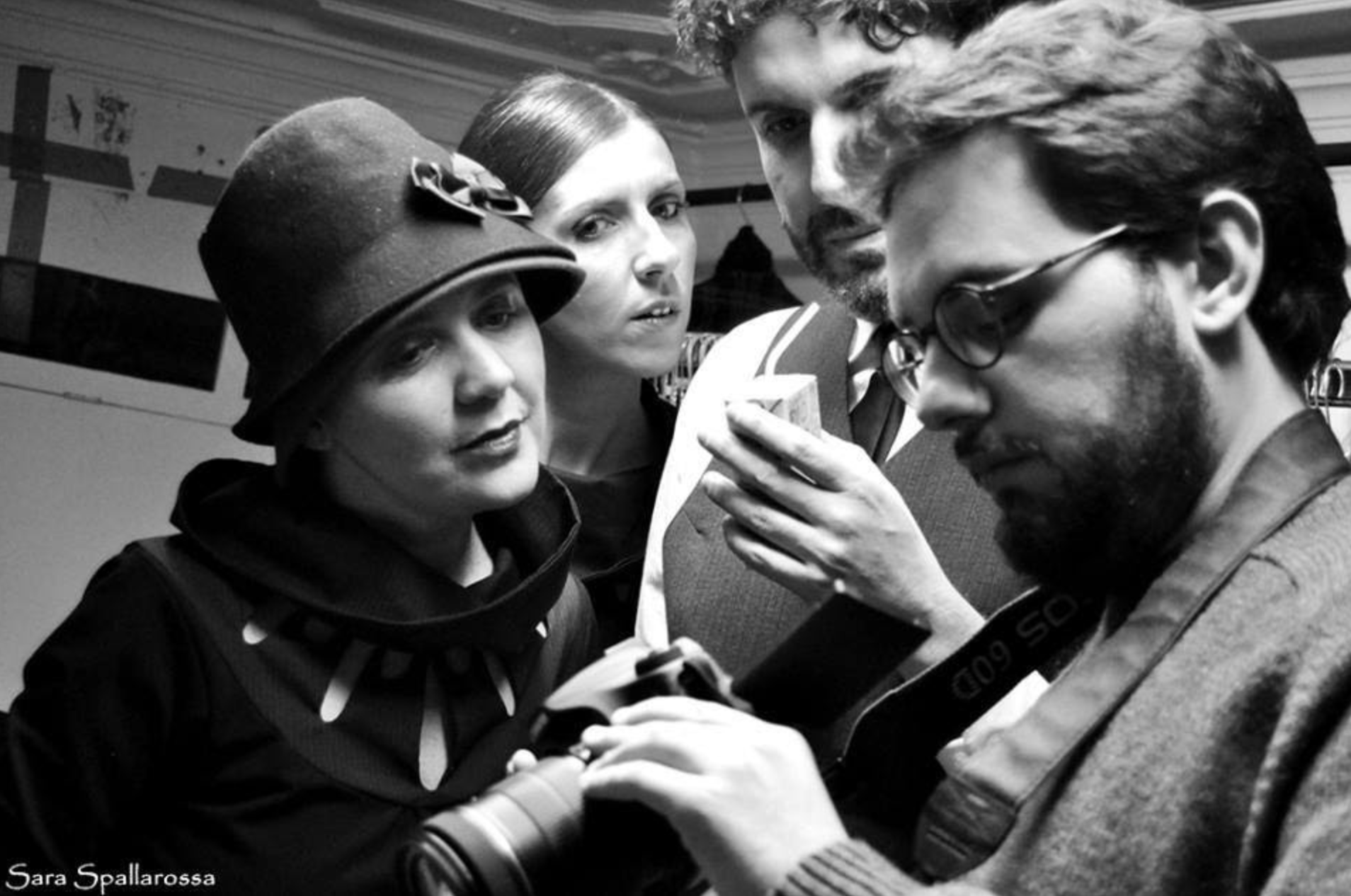
Augenblick
オーゲンブリックはイタリアのジェノバで2014年に結成された、アレッサンドラ・エレトラ・バドイノ、マリナ・ジャルディーナ、ファビオ・ポッジ、マルコ・ロンゴによるビデオダンスとパフォーマンスのためのコレクティブ。Augenblickオーゲンブリックとはドイツ語で「瞬間」の意。
augenblick.it
2015年、Teatro Akropolisテアトロ・アクロポリス、RETE Danzacontempoligure RETEダンツァコンテンポリグーレ(ライブダンス)、オーゲンブリックAugenblick(ダンスフィルム部門:Stories We Dance)により、コンテンポラリーダンスとビデオダンスの新しいフェスティバルFuoriFormatoフリフォルマットがジェノバで開催された。
fuoriformatofestival.it/swd
アレッサンドラ・エレトラ・バドイノ
アルベンガ出身。1980年生まれ。舞台セットデザイナー、パフォーマー。Danzeducatore®ダンス教育者®として活動。
マリナ・ジャルディーナ
ジェノバ出身。1970年生まれ。ダンサー、パフォーマー。2009年よりCompagnia Filòコンパニーア・フィロの一員として女優、作家としても活動。
ファビオ・ポッジ
サンタ・マルゲリータ・リグレ出身。1972年生まれ。博士(都市学、IUAV大学、ヴェネツィア)。教師、エッセイ作家、パフォーマー。
マルコ・ロンゴジェノバ出身。1986年生まれ。映画監督、教師、映画評論家。ミラノのCivica Scuola di Cinemaシビック映画学校の映画監督専攻卒業。
Augenblick is a video dance and performance collective formed in 2014 in Genova (Italy) by Alessandra Elettra Badoino, Marina Giardina, Fabio Poggi and Marco Longo. In German, Augenblick means moment, instant.augenblick.it
In 2015 FuoriFormato, a new festival on contemporary dance and video dance, was created in Genova by Teatro Akropolis, RETE Danzacontempoligure (live dance) and our team, Augenblick (dance film section: Stories We Dance)fuoriformatofestival.it/swd
bio
Alessandra Elettra Badoino. Albenga, 1980. Theatrical set designer, performer. She specialized as a Danzeducatore®.
Marina Giardina. Genova, 1970. Dancer, performer. Since 2009 she’s also been part of Compagnia Filò as an actress and author.
Fabio Poggi. Santa Margherita Ligure, 1972. Teacher, PhD in Urbanism (Iuav, Venezia), author of various essays, performer.
Marco Longo. Genova, 1986. Filmmaker, teacher and film critic, he graduated in Film Directing at Civica Scuola di Cinema, Milan.
works
- Su misura (Italy 2014, HD, 1:85.1, b/w, stereo, 1’)performers: Alessandra Elettra Badoino, Marina Giardina, Fabio Poggi camera and editing: Marco Longo supported by Officina Letteraria, Genova.
- /si:/ (Italy 2016, HD, 1.85:1, b/w, mute, 1’)performers: Alessandra Elettra Badoino, Marina Giardina, Fabio Poggi image: Fulvio Lombardi, Simone Mazzoleni, Elena Melloncelli editing: Marco Longo produced by Augenblick supported by Grand Hotel Miramare, Santa Margherita Ligure (Italy).
- Carte blanche (Italy 2017, HD, 1:77.1, color, stereo, 6’)performers: Alessandra Elettra Badoino, Marina Giardina, Fabio Poggi camera and editing: Marco Longo assistant editor: Fulvio Lombardi costume supervisor: Alessandro Osemont produced by Augenblick with the generous support of Stavros Niarchos Foundation in cooperation with Université Nice Sophia Antipolis, Université Sorbonne Nouvelle - Paris 3, Università degli Studi di Genova
love is the only master I'll serve
愛だけが私の主人
20’28
監督:Nicholas Lens
振付:Louise Peterhoff
ベルギー 2006
ダンス映画監督たちへのメールインタビュー
A Mail Questionnair to Dance Film Directors
インタビュアー・翻訳:黒田瑞仁
過去にリリースされた作品解説を読んで、二人の女性が一つの人格で、子供が愛の化身だと知りました。美しい作品ですね。作品自体が誰かの内的空間で起きているのでしょう。ロケーションが放つ独特の雰囲気も気になりました。このロケーションはどこで、なぜここを選んだのでしょうか?
この場所はベルギーのワインエーゲムにあります。以前は工業団地だったのですが、世界でも著名なアートコレクターのアクセル・ヴェルヴォルト氏が購入し、全体を芸術拠点へと転用しています。撮影現場としての利用は我々が初めてで、スタッフ全員が撮影中は飲食や喫煙をしないという取り決めへのサインが必要でした。照明の屋内持ち込みもできず屋外に設置しました。大変な撮影でした。理由は5世紀に作られた6体の貴重な仏像が空間内に置かれていたからです。場所自体がもはや神聖視されていました。私の象徴を重んじる作品をあの場所での撮影できたことは、作品の世界観にとって大きなプラスになりました。
作中の言葉でlecher(色男)という言葉が出てきますね。作品全体で「愛」という言葉がとても多く出てきますが、これらは異性愛のことなのでしょうか。
歌詞はラテン語、英語、スウェーデン語で書かれています。そこではあらゆる愛が語られています(愛はそれだけで存在し、裁かず、問わず、ただそこにあるのです)。性愛は一つの形でしかなく、他の愛の形を排除するものではなく、むしろ同時に他の形としても存在するのです。”死でさえもあなたへの愛を邪魔することはできない”(本編より)
あなたはこの作品の監督、プロデュース、脚本、作曲まで手がけられていますね。ビデオダンスの監督はたくさんいますが、曲を自分で作る人はあまりいないように思います。作品を鑑賞すると曲がこの作品が一つになるためにとても重要なのだろうことがわかります。もしかして、この作品は曲を先に作って組み立てていったのですか?
まさに音楽は全ての要でした。同時に会場でのスウェーデン人ダンサーのLouise Peterhoffとのリハーサルも作品にとって重要なスタート地点でした。リハーサルは音楽抜きで行われたにも関わらずです。一部の楽曲は撮影後に改変し、シーンとの相性をよくしようとしました。それでも全ての撮影は音楽を軸に考えて行われました。一部の楽曲は撮影中に演奏されました、ちなみにルナ/セレナを演じた歌手Claron McFaddenは曲の実際の歌い手でもありました。ダンサーは、特に作中冒頭のシーンでは身体だけで自己表現をしなければならず、もう片方の人物は静的で表現に言葉を必要としています。3人目の人物(古い魂ですがここでは子供の姿をしています)は、言葉も必要とせず、表現の必要もなく、ただそこにいるのです。
I read your commentary and learned that the two women are personas of a single person and that the child is a love-god. I saw the whole story being happening in someone's inner space. So I was curious about the unique atmosphere that the location. Where is this and why did you choose the place?
The place is in Wijnegem, Belgium. It was an industrial complex before until the worldwide well known art collector Axel Vervoordt bought it and transformed the entire place into an art platform. The venue itself was never used before for a shooting. The entire film crew had to sign they would not eat, drink or smoke during the shooting at the venue. Also the lightning could not be put inside, but outdoors, which was was a tremendous task. The reason is that six very precious 5th century buddha’s are in permanent expostion. So that place became almost sacred.To be able to shoot my symbolical film on that location was a tremendous bonus for the ambience of the film.
The word “love” is in the title and also mentioned repeatedly in the film. I also noticed the word "lecher" in the lyrics. Are all the “love” mentioned in this work about sexual love?
The lyrics are in Latin, English and Swedish. It is about love in all its aspects (Love exists by itself, it does not judge, it does not question, it just exists). The sexuality is only one form and does not exclude any other form, but is at the same time the other form as well. “Not even death shall obstruct my love for you"
You directed, produced, wrote the script, and even composed the music yourself. There are a lot of dance film directors, but I believe there aren’t so many who writes the music themselves. You could tell that the songs are essential for the piece to come together. Did you start from the music when you made this film? How were they composed?
Yes the music was the fundament for all. Also my rehearsals at the venue with the Swedish dancer Louise Peterhoff was essential as starting point. Although we rehearsed the dance scenes without music. Some of the music I changed after the film, to make it more fitting on certain scenes. But all was shot with the music in mind. Some pieces were performed during the shooting indeed, the Luna-Serena character is the actual singer (Claron McFadden) by the way. The dancer, especially in the large opening scene. can only express herself with her body, the other female character is most static and needs words. The young character, an old soul in the form here of a child, does not need words, she does not need expression, she is only present.
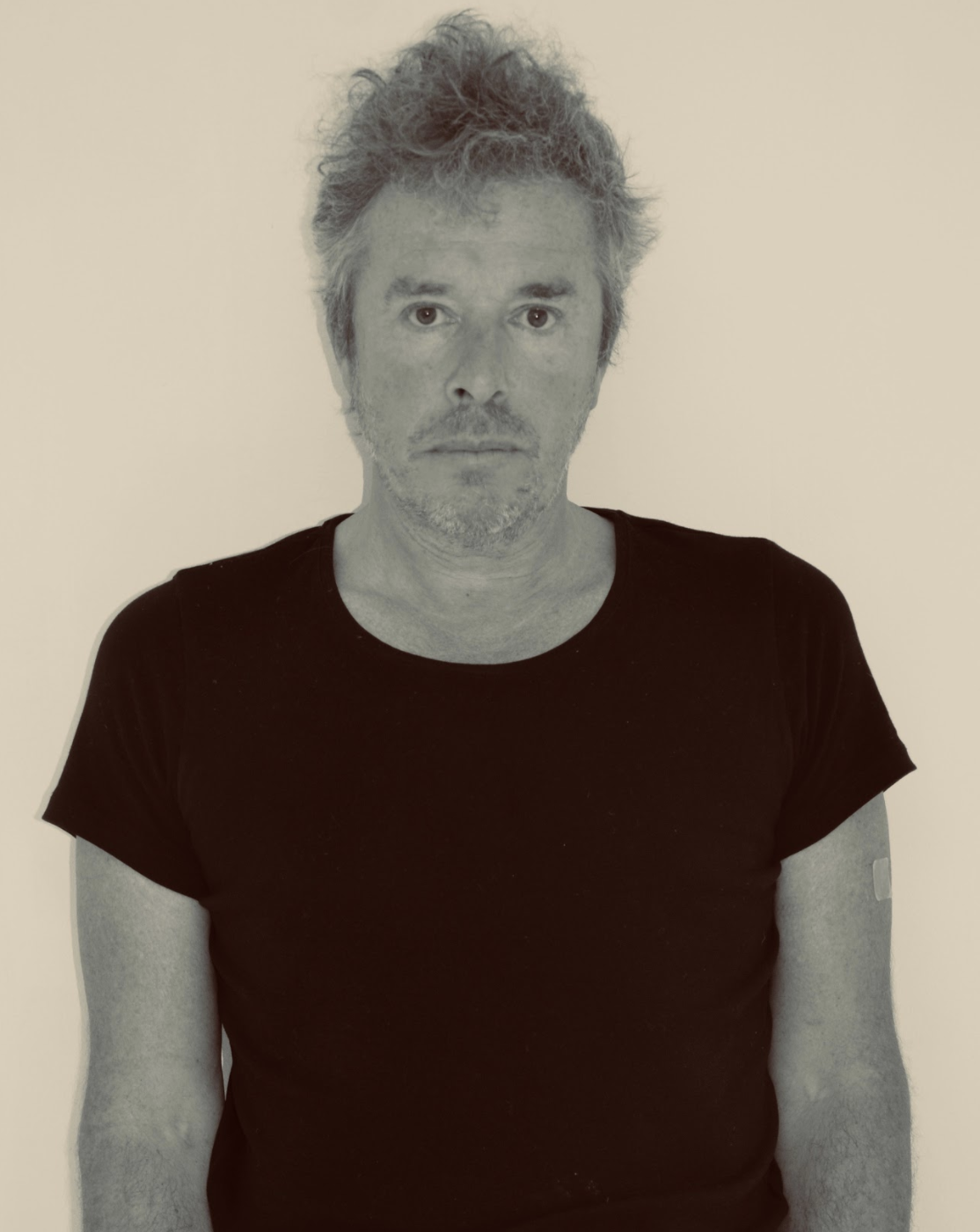
私のコンテンポラリーダンス愛は、私の国においてコンテンポラリーダンスが文化全体のなかで重要な位置にあることを思えば不思議なことはありません。この国のコンテンポラリーダンスは何十年もオペラ、映画や演劇を活躍の場としてきました。越境的な表現は私たちが幼い頃から親しんでいたため、これらを合わせることに違和感はありません。多くの人から私はコンテンポラリーオペラの作曲家だと認識されていますし、実際それは間違っていません。レコード会社が新作アルバムのための映像素材やビデオクリップ作成を提案してきた時、私は何の経験もなかったにも関わらず小さな映画作品を作ってみたいと思いました。私が作曲する音楽はバレエ、映画や映像作品に使われることがほとんどですが、それらの最終的な出来に対して私は必ずしも満足していたわけではありませんでした。これが自分で映画作品を作ってみようと思った一番の理由かもしれません。 私の楽曲を元に作られた映画です。作曲家自身が映像も手がければ、少なくともこの作品では楽曲が間違った解釈をされることはないわけです。そしてわかったのは、映画を監督するということは大規模な音楽創作の現場を統括し指揮するのと大きな違いはないということです。一緒に仕事をする人たちからただ信用してもらうこと。だからまずは信用を得ることです。信用が鍵なのです。それが全てであって、他には何もいりません。とうとう別の映画を作る機会に恵まれませんでした。助成金制度が変わってしまったからです。オペラの作曲家が映画を撮る必要はないという判断が下されました。寂しいことです。だからこそ、この作品だけでも存在していることは大きな救いになっています。関心をもっていただきありがとうございました。
My love for contemporary dance is not surprising as I come from a country where contemporary dance is most important and became a totally normal part of our general culture. Contemporary dance has been used in my country in opera, film and theatre since many decades. These interdisciplinary forms of expression became something we were raised with and it felt like always a totally natural thing to use them together.Most people will know me as a composer of contemporary opera however, what I actually am.When my record company proposed to make video material or a clip for a new album of mine that came out, I felt more like making a little film, although I did not have any experience at all. The thing is that via my publisher my music was very often used for ballet, film and audiovisual productions. I can not say I was always happy with the result I saw afterwards. This is perhaps the main reason I decided to shoot and make the film myself. A film based on my own music, so for once the music could not be misunderstood or misinterpreted, as the composer himself made the visual based on his work.I found out that directing a film does not differ much from directing or conducting a big music production. The people you work just need to trust you, and you need to earn that trust. Trust is the keyword. That is all actually. Nothing else.I did not get the chance anymore to direct another film. As the policy for getting fundings changed. And it was decided that opera composers should not make films anymore. Sad.But I am very happy that this one exists at least.Many thanks for your interest.
Tickle Me to Death
私を死ぬほど喜ばせるモノ
8’00
監督・振付:Maia Elisabeth Sørensen
デンマーク 2010
ダンス映画監督たちへのメールインタビュー
A Mail Questionnair to Dance Film Directors
インタビュアー・翻訳:黒田瑞仁
この作品では女性が猫を扮していると思うのですが、動きや性格など、猫のどんなところから踊りのインスピレーションを受けたのでしょうか。
褒め言葉として受け取りますが、実はこの作品は1920年代の映画の演技や身体表現にインスパイアされ振り付けや動きの質感の参考にしたものです。ここには私がニューヨークに数年間暮らしてからデンマークへ戻った時の気持ちが描かれています。とても社交的なアメリカン・カルチャーと、控えめでよそよそしいスカンジナビア精神の対比なのです。作風は、現実社会を写実的なストーリーに落とし込むことが流行していた当時のデンマーク映画シーンに対する返答です。私は作品内のパフォーマンスと振り付けが演技とコンテンポラリーダンスの合いの子になればいいと思っていました。だから3人の出演者は、ダンス、サーカス、演劇というそれぞれ別のジャンルの専門家です。猫は全てを見通す傍観者で、女性の賢い半身のような不思議な存在になっています。
街並みが美しいですね。しかしどこか抽象的にも感じます。どこで撮影されたのでしょうか?
この映画はスウェーデン南部の小さな村で撮影されました。中世風の建物が立ち並んでいますが、2000年あたりにできた場所なので古そうな雰囲気のわりに実物は見るからに新しく、そこではまるで映画のセットにいるような感覚に襲われます。作品に舞台っぽさと超時間的な雰囲気を添えてくれました。村に暮らしている人々はいますが出歩いている人を滅多に見かけないため、撮影許可を住民組織からもらった後の撮影はスムーズに運びました。猫が出てくるシーンはグリーンバックでの撮影です。
見ているうちに女性が猫に扮しているだけでなくて、男性が猫に見えてきたり、猫が人間の女性になっているのかもしれないとも思い始めました。よかったら作品にどんなメタファーの可能性を仕込んでいるのか教えてください。
一人の女性が誰かとのつながりを求めて狩りに行く、というのが全体の筋書きです。さびれた町で出会うたった2人の他人は彼女の前から姿を消してしまいますが、黒猫だけはそのまま彼女を見守っています。猫は一度だけ不吉を予告するように道を横切りますが、これは女性が男性に固執しすぎているためです。私が表現したかったのは、誰かと繋がりたいのに繋がれない孤独な気持ちなのです。
日本では少し前に『アメリ』というフランス映画が流行ったので、こういうレトロで可愛い世界観はフランス的なものだと思う日本人が多いと思います。しかしあなたはデンマークの作家ですね。あなたにとってこの世界観は何を意味するのでしょうか。
私も『アメリ』が大好きです。多分その連想は髪型からくるのでしょうね。でも私が参照したのはルイーズ・ブルックスというサイレント映画時代のスターです。彼女はファッションリーダーでもあり、その自由な振る舞いで女はかくあるべきという時代に囚われませんでしたが、それゆえに最後は孤独に過ごした人です。
In "Tickle me to death", I could see a woman dancing like a cat. Which parts of the cat's movement or character inspired the choreography?
I take that as a compliment although the film was inspired by the theatrical, physical acting in films from the 1920s, and therefore also the movement quality and choreography. Basically the film is an illustration of how it felt for me to move back to Denmark after living in New York for five years, and the difference between the highly extroverted American culture to the reserved and distant Scandinavian mentality. The stylistic choices were a response to the Danish film scene where social-realistic stories were predominant.I was aiming for the performance and choreography to be somewhere in between acting and contemporary dancing, which is why the three human performers come from different performance backgrounds: dance, circus and theater. The cat is the all-knowing observer in the film, and somehow becomes the wise, alter-ego of the woman.
The scenery is beautiful, but it feels somewhat nonrepresentational and nostalgic. Where is the location and how were the scenes shot?
The film was shot in a small village in South Sweden and it was quite an amazing find. This village was built around 2000 in the style of medieval houses, and because it looks old but obviously is new, it feels like a movie set already - which added even more theater to the style, as well as a sense of timelessness. Even though there are people living there, you hardly see anyone on the street either, so after getting permission from the board of residents, it was fairly easy to shoot there.The scenes with the cat were shot on green screen.
In the second half of the film, I started to imagine that it's not just the women that is a cat but also the man, or maybe the cat has metamorphosed into a woman. If you don't mind, please tell us what metaphors or possibilities you set in this work?
The whole story is about a woman hunting for people to connect with. The only two people she encounters in the deserted town literally disappear in front of her, but the black cat is still present and observant. At one point crosses the street, as a sign of something bad that's about to happen, because the woman is about to be too intense with the man. What I wanted to convey is more the feeling of being alone in the desire to connect with other people.
A French film called "Le Fabuleux Destin d'Amélie Poulain" got popular in Japan a while ago, so some Japanese audience would associate this kind of retro and cute in-world with France, but you are a Danish artist. What does this kind of world style mean to you?
I absolutely love "Amelie...", and I think the resemblance comes with the haircut. But my reference was Louise Brooks who was a famous movie star in the silent film era, a style icon and free-spirit breaking the conventional female role in society at the time, and she ended up alone because of it.
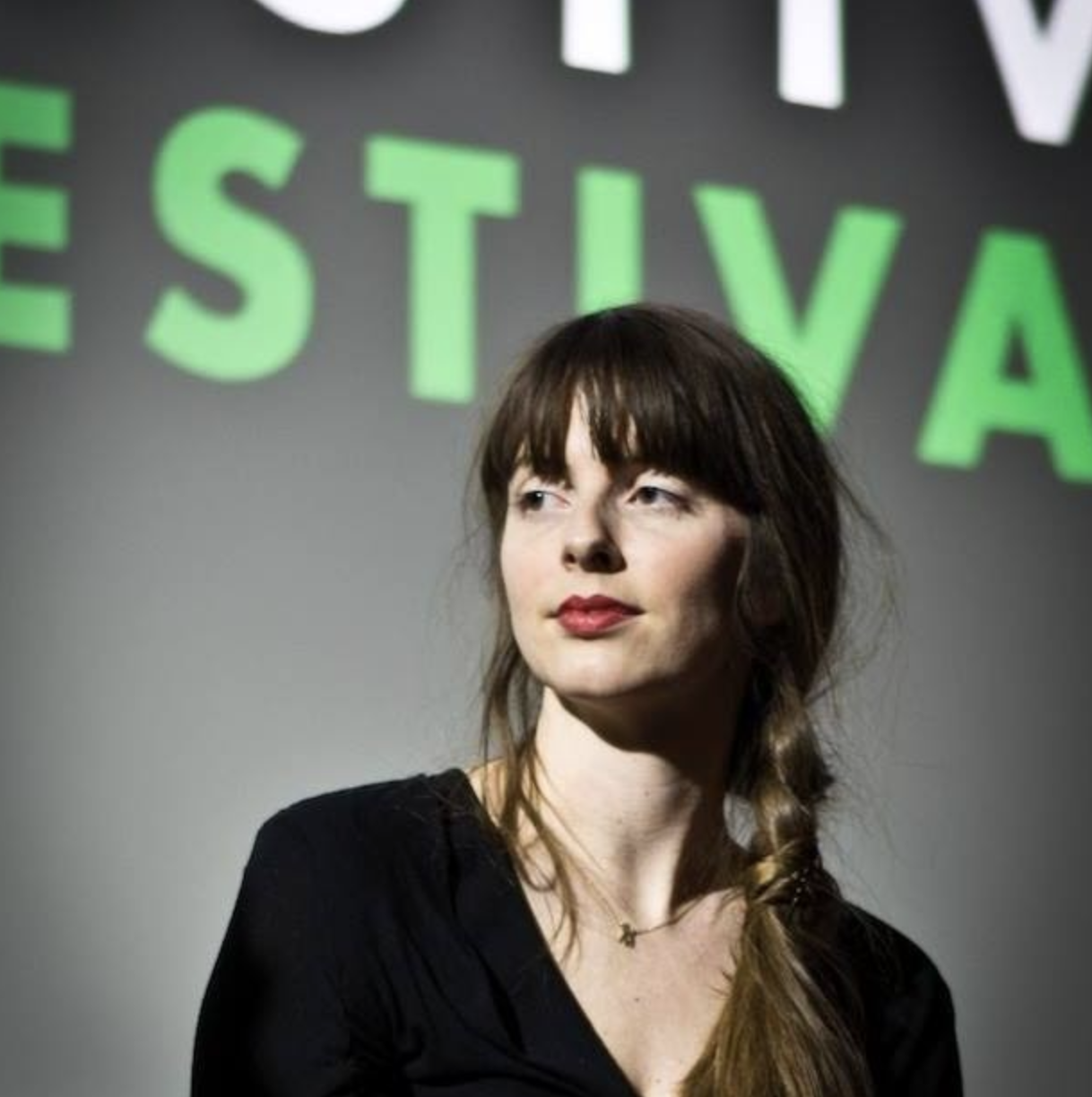
Maia Elisabeth Sørensen マイア・エリザベス・ソランセン (デンマーク)は、ダンスと振付のバックグラウンドを持つオランダ在住のダンス映画作家。2007年にマーサ・グラハム・スクール・オブ・コンテンポラリーダンス(アメリカ)を卒業してからは、振付家、演出家、編集者としてダンス映像を専門に制作。社会の端にいる人々への親近感を欠かさず、現在はティーンエイジャーに注目し子供から大人への変容を扱うなど、社会的なテーマに焦点を当てている。彼女のドキュメンタリーとカメラの振り付けを組み合わせる作風は、「私を死ぬほど喜ばせるモノ(Tickle Me to Death)」(2010)などの初期作品での振り付け経験が元になっている。
http://maiaelisabethsorensen.com/
Maia Elisabeth Sørensen (DK) is a dance film artist with a background in dance and choreography currently residing in the Netherlands. Graduated from Martha Graham School of Contemporary Dance (US) in 2007 and has since then specialised in dance film as a choreographer, director and editor.Maia has always had an affinity towards people on the margin of society and her current practice focuses on social topics, focusing on teenagers and their transformation from child to adult. She works with a combination of documentary and choreography for the camera, where she draws from her choreographic experience in her early works such as Tickle Me to Death (2010).
http://maiaelisabethsorensen.com/
Antithesis
アンチテーゼ
11’30
監督:Natalia de la Vega
振付:Selva Lecot
アルゼンチン 2011
ダンス映画監督たちへのメールインタビュー
A Mail Questionnair to Dance Film Directors
インタビュアー・翻訳:黒田瑞仁
タイトルについて。具体的というより抽象的なタイトルですね。一体何に対してアンチなのでしょうか。
この短編映画の着想は、ヘーゲルの弁証法の一部としてのテーゼ、アンチテーゼ、ジンテーゼの概念から得ました。これら三つの要素は、現実が繰り返す過程として理解されています。
「テーゼ、アンチテーゼ、ジンテーゼ」という題名は、複雑で理屈っぽく、分かりやすすぎるように思えました。だからAntithesisアンチテーゼという名前にしたのですが、確かに仰るとおりヘーゲルの理論を知らなければ抽象的なタイトルかもしれません。
彼女たちはあの家で同じ時間を繰り返しているようでもあり、時間が進んでいるようにも見えます。この作品の中の時間の流れ、あるいはストーリーについて教えてください。
その質問に答えることは、前の質問への答えの続きになります。その通りです。そこには3つの時間、3人の女性、3つの現実、3つの世界が存在しています。それらは併存し、乗り越え、繰り返しています。
この理論を、身体と動画の言語を使って描き出したいと思いました。
映画は主人公が切れた電球を交換している最中に、床に落ちるところから始まります。彼女が人生から切り離された瞬間、繰り返しの概念が現れるのです。
今の時間、つまり主人公が電球を取り替えている場面はフィルムで撮影しました。夢の中のような情景で三人の女たちが争っているところは、デジタル機材で撮影しました。ヘーゲルの論によればテーゼ、アンチテーゼ、ジンテーゼは人間の魂が真実を求めて昇華していく3つの段階です。3人の女性が引き伸ばされ抽象化された時間の中で争っています。命の最後の1秒の中でです。この刹那のうちに彼女は自分が誰なのか、誰だったのか、本当の自分がどれなのかを理解しようとしています。
独特のメイクや、花柄のワンピース、下着姿などが印象的でした。衣装やファッションへのこだわりを教えてください。
美術や衣装担当部門と一緒に目指したのは、この短編映画が持っている夢や伸縮する時間というコンセプトと美術スタイルを合致させることでした。そのために私たちは衣装や小道具やシーンの情景を同じ素材感で、ある色の幅に収めることに決めました。ドレスも、枕も、シーツも美術部門が作りました。下着を見つけるために、ビンテージものや古着の販売店を巡って想定している色味に収まるようなものを気をつけて探し出しました。結果、映画は寸分違わずイメージ通りの仕上がりになっています。
作中で曲らしい曲はあまり使われていませんが、不協和音のような音が曲としての効果を果たしてたと思います。あの音にあわせて振り付けをしたのですか。
はい、確かにこの短編映画に音楽は使われていません。作品イメージに合致し作用し合うような音源集を作りました。それから実際の音を取り込むことも重要だと気づいたんです。当時のダンス映画は楽曲に合わせて作られたか、イメージが楽曲から来ているものが殆どでした。それをやりたくなかったので現場で音を収録し、オリジナルの音響集を作り、楽曲は使いませんでした。振り付けはコンセプトに従って行い、一部は音の質感を参考にはしましたが、音源集は全ての撮影が終わった後に完成しています。音響設計についての経験は私には殆どありませんでしたが、音を使って何をどう伝えたいのか確信は持っていました。
About the title. It's more of an abstract title than a concrete one. What is this film “anti” to?
The idea of the short film starts from the notion of thesis, antithesis and synthesis, concepts that are part of Hegel's dialectic. These 3 elements are part of the spiral process in which reality is conceived.
This title: Thesis, antithesis, synthesis, seemed complex, theoretical and very explicit. Therefore, I chose Antithesis, although as you say, if you don't know the Hegel´s concept can be seen as an abstract title.
Depending on the way you look at it, the girls seem to be repeating the same time in that house. Could you tell us about the flow of time in this film, or the story itself?
Continuing with the previous question. Yes, indeed. There are 3 times, 3 women, 3 realities, 3 worlds. They coexist, they overcome and they repeat themselves.
I wanted to reflect the idea of this theory with the language of the body and the moving image.
The short film begins when the protagonist falls to the floor at the moment when she is changing a burned-out lamp. In the second that she has left of life this concept of spiral emerges.
The current time, that of the protagonist who changes the lamp is shooting in film and the dreamlike part, the fight between the 3 women is shooting on video. According to Hegel's theory, Thesis, Antithesis and Synthesis are 3 phases of an evolutionary process of the human spirit that repeats itself towards the search for truth. They are three women who fight in that elastic and abstract time: the second that remains of her life. In this instant she is trying to understand who she is, who she was, what her true dimension is.
The makeup, floral dress and underwear costumes were impressive. Tell us your passion for costumes and fashion.
Together with the Art and Wardrobe Department we wanted the art direction of the short film will be in accordance with the dream and elastic time concept. We created a vision in which both, the costumes and the props and scenery had to have the same genre (fabric) and range of colors. The dresses, the pillows, the sheets were made by the Art Department. And we look for the underwear wardrobe in places of sale of vintage and old clothes, always with the precaution of respecting the range of colors that we were looking for. At the end, the work on the image of the film was very exhaustive.
There isn't much music used in the film, but the dissonant-like sounds seemed like music that the characters danced to. Were the choreography made to match those sounds?
Yes, indeed there is no music in the short film. We create a soundtrack that go with and at the same time interacts with the image. We also realized that was important to take direct sound. Generally, at that time, dance short films were mostly set to music, or the image was directly related to the music. I wanted to break with that, and for this reason I decided to take direct sound and create an original soundtrack but without any music. We put together the choreography with this concept and with some reference sound textures but the soundtrack was finalized after having the final cut of the short film. In fact I put together the sound design without having much experience in that but with the conviction of what I wanted and how I wanted to tell it.
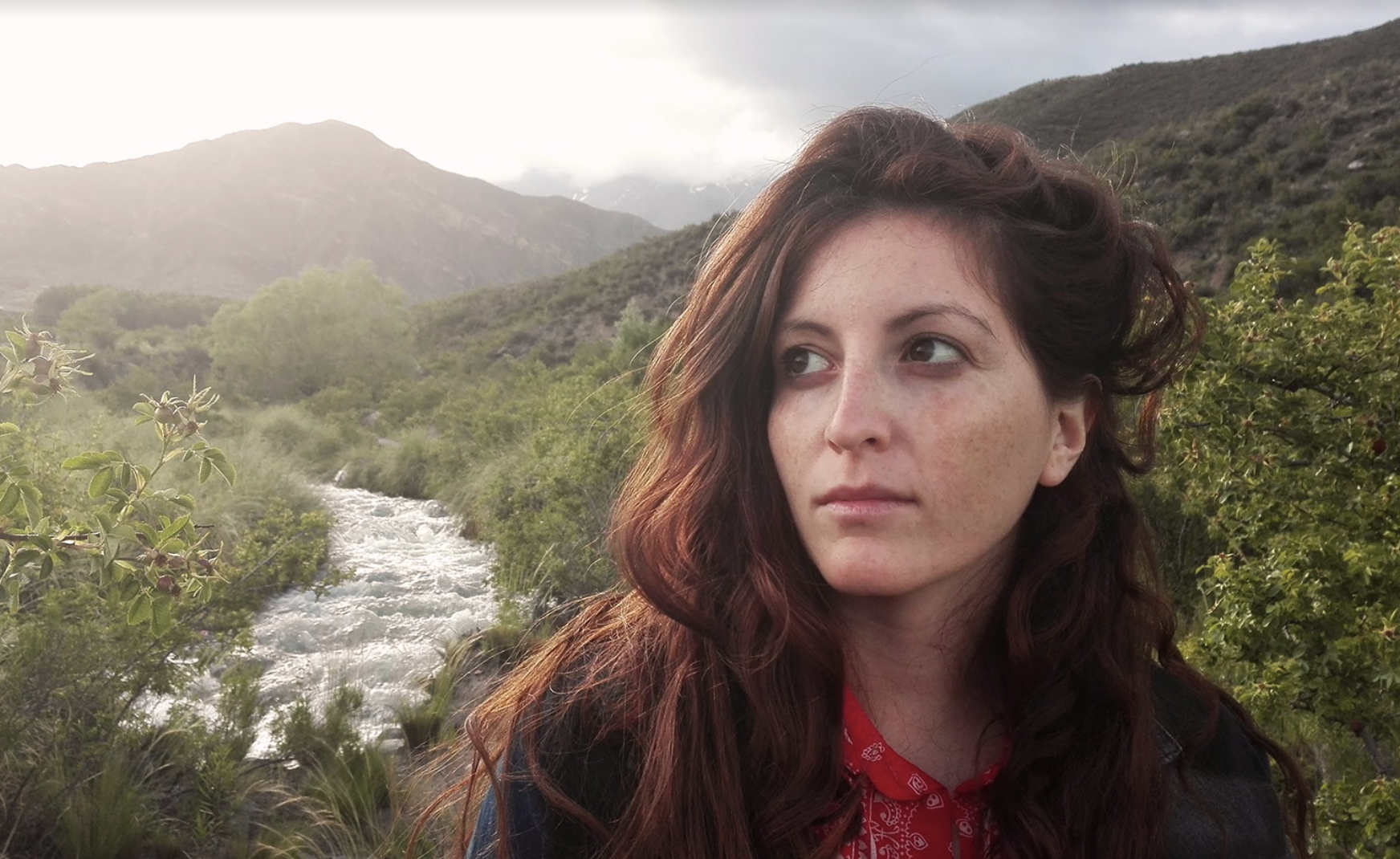
ナタリア・デ・ラ・ベガ
映像、音響デザイナー
アルゼンチン
2011年に短編映画『Antithesisアンチテーゼ』を監督し、世界各地の映画祭で受賞。
Edison Cájasエジソン・カガスの映画「El vals de los inútilesエル・ヴァルス・デ・ロス・イヌティレス」(チリ、アルゼンチン)、Clara Picassoクララ・ピカソの「La Protagonistaラ・プロタゴニスタ」、Fernando Dominguezフェルナンドドミンゲスの短編映画「Salers船乗り」、Mariano Cócoloマリアーノ・ココロの「Al Silencioアル・シレンシオ」のプロデュースを手がける。2019年に形式と言語の横断を試みる制作会社Navega Cineナベガ・シネを設立。
過去にINCAA、Fondo de Fomento Audiovisualフォンド・デ・フォメント・オーディオビジュアル(チリ)、DOK Leipzig Market DOKライプツィヒ・マーケット、 Tribecaトリベカ、BAL、Morelia Labモレリア・ラボ、Guadalajara Co-production Forumグアダラハラ共同制作フォーラム、LABEX、Doc Montevideoドク・モンテビデオ、Fidoc,フィドックなどの支援を受けて製作。
作品が作品はクレルモン・フェラン、ロカルノ、釜山、ZINEBI、Indie Lisboaインディー・リスボア、ハバナ、マル・デル・プラタ、BAFICI、グアダラハラ、サンパウロ、トゥールーズ、ビアリッツ、ジフラバ、バルディビア、Festival dei Popoliフェスティバル・デイ・ポポリなどの映画祭で受賞・入選。
ナタリアはFeministBillboardフェミニスト・ビルボードの一員であり、Good Pitch and Talentsグッド・ピッチ・アンド・タレンツの卒業生。
Natalia de la Vega
Natalia de la Vega (Argentina) is an image and sound designer.
In 2011 she directed the short film Antithesis, awarded at several film festivals around the world.
She produced the films “El vals de los inútiles” (Chile-Arg) by Edison Cájas and “La Protagonista” by Clara Picasso and the short films “Salers” by Fernando Dominguez and “Al Silencio” by Mariano Cócolo.
In 2019 she founded the production company Navega Cine interested in hybrid formats and crossing languages.
Her productions received the support of INCAA, Fondo de Fomento Audiovisual(Chile), DOK Leipzig Market, Tribeca, BAL, Morelia Lab, Guadalajara Co-production Forum, LABEX, Doc Montevideo, Fidoc, among others.
Her films were awarded and selected at festivals such Clermont Ferrand, Locarno, Busan, ZINEBI, Indielisboa, Havana, Mar del Plata, BAFICI, Guadalajara, Sao Paulo, Toulouse, Biarritz, Jihlava, Valdivia, Festival dei Popoli, among others.
Natalia is part of FeministBillboard and alumni of Good Pitch and Talents BA.
Platform 13
13番ホーム
13’44
監督:Camiel Zwart
振付:Klaus Jürgens
オランダ 2014
ダンス映画監督たちへのメールインタビュー
A Mail Questionnair to Dance Film Directors
インタビュアー・翻訳:黒田瑞仁
まず最初に、あなたについて教えてください。これまでにどういう作品を作ってこられましたか?
Camiel Zwart : アムステルダムのDutch film academyで映画監督になる勉強をしました。主にドキュメンタリー映画を作製していますが、ダンス映画を撮るのも好きです。最新のドキュメンタリー映画は金鉱夫として老いていくこと、最新のダンス映画は路地で人に会うことをテーマに作りました。身近で、感動的、たまに笑えるようなものを作るのが好きです。
車掌さんというと、日本では真面目なイメージがあるので変な動きをしはじめるとは思いもよりません。車掌さんに何かさせるという発想はどこから出てきましたか?
Camiel Zwart : それは意外です。4年前に滞在したとき、私は日本の国と人に惚れ込みました。確かに西欧式のライフスタイルが日本にはありましたが、それはヨーロッパのスタイルとはずいぶん違います。私が初めて車掌さんを見たとき、彼らが緻密な、まるでダンスのような動きで人々と電車を動かしていることに驚きました。その瞬間、車掌さんについてのダンス映画を作ろうと決めました。当初はドキュメンタリー形式のダンス映画を考えていましたが、最終的にはこのようなフィクションとして完成しました。
タイトルの意味を教えてください。13を不吉な数という意味で使っているのですか?
Camiel Zwart : ヨーロッパでは13という数字はとても不吉な数とされていて、13階のないビルや13番線ホームのない駅は珍しくありません。このタイトルを選んだのは、作中でメインキャラクターが存在しないはずの場所に閉じ込められてしまうからです。
撮影場所をいくつか使われています。日本だとわかるものもありますが、そうでない場所もあるようです。どういう場所を、どうやって選んだのですか?
Camiel Zwart : 実は撮影場所はどれも日本ではないのですが、あなたがそう言ってくれるのは願ってもないことです。というのも私たちには日本に行くだけの資金がなかったので、オランダに日本を作ったのです。幸い、ロッテルダムにある日本そっくりの素敵な駅を見つけられました。もちろん壁の掲示物をすべて取り替えたり、黄色い線を床に敷かなくてはなりませんでした。スーパーヒーロー風の、マンガ的なシーンのためにロッテルダムの駅をLEDライトの明るい色で照らしました。不思議なトンネルは同じ駅にありました。古い放置された駅に関しては別の話が。私たちはオランダ全土とドイツの一部を探しましたが、いい場所は見つかりませんでした。とうとう作中で使ったこの駅をベルギーで見つけ、恋に落ちました。メインキャラクターや、何もかもが清潔で整った日本の駅とは真逆の印象を持った駅を見つけたかったのです。
日本の観客はどのように作品を受け止めると思いますか? 西洋の観客とは反応は違うと思いますか?
Camiel Zwart : 日本でこの映画を公開できることをとても嬉しく思っています。なぜなら私たちはヨーロッパの作家で、どうしてもヨーロッパの眼を通じてしか日本を描けないからです。作中の表現に失礼がなく、日本の皆さんに気に入ってもらえたらと思っています。将来、日本でこの映画を見てその反応を知る事ができたら幸いです。
現実には人は目的地に行くために移動します。しかし存在しないはずの13番線にも、旅をする乗客たちがいることが気になりました。あなたは旅や移動というものをどう考えてこの作品を作ったのでしょうか。
この作品は車掌の悪夢として作られた映画です。彼は他人を助ける車掌ですが、その役割を彼は十分に果たせなくなってしまいます。女性がプラットホームに立っているシーンで、彼は彼女を列車に乗せて目的地まで送り届けようとします。つまり、あの女性はどこかに移動しようとしているわけです。他のキャラクターたちは彼が手振りだけではもはや乗客をコントロールできていないことを示しています。このシーンでは文化の階層を描いています。一つの文化についていけなければ、もう別の文化には順応でkりうでしょうか。最後の場面のプラットホームで待っている人たちはどこかに行きたいのですが、悪夢であるこの世界では理屈が通常とは異なります。彼らは永遠に来ない電車を待っているのかもしれません。
Please tell us about you, and what kind of pieces you have made in the past.
Camiel Zwart : My name is Camiel Zwart, I studied directing on the Dutch film academy in Amsterdam. I manly work on documentary films but I also love to make dance films. The last documentary I made was about ageing as a goldmine and my last dance film was about meeting in a alley. I like to make films that are intimate, touching and sometime funny.
Train conductors are thought to be very businesslike in Japan, one of the last people you'd expect to start acting strangely. How and why did you come up with this moving train conductor?
Camiel Zwart : Thats funny to hear. I was in Japan 4 years ago and really fell in love with the country and the people. Even though you have a western life style it is a lot different from what we know in Europe. When I saw the train conductors for the first time I was amazed by there precision and almost dance like movement that look like they could control trains and people. That instant I decided that I would love to make a dance film about these conductors! First I thought of going back and making a documentary style dance film but in the end it became this fiction film.
Please tell us the meaning of the title. Is 13 used as an unlucky number?
Camiel Zwart : In Europe the number 13 is very unlucky number and therefore you often have buildings that has no 13th floor or train stations that do not have a platform 13. I choose this name because the main character gets stuck in a place that does not exist.
You have used several locations. I could tell that some are in Japan and some not. Could you tell us where they are, and how you chose them?
Camiel Zwart : Well actually none of the locations where in Japan, but its a compliment that you thought so. We had no money to flight to Japan, so we had to build Japan in Holland. Luckily we found a very nice station in Rotterdam that looked like a Japanese one. Of course we had to change al the writing on the walls and put down the yellow line on the ground. For the superhero, manga like scene we lighted the Rotterdam station with led lights in very bright colors. The strange tunnel was also on the same location. The old abandoned station was another story. We searched the hole of Holland and a bit of Germany, but we could not find what we where looking for. In the end we found this station in Belgium and fell in love with it. We wanted to have a station that was the opposite of our main character and the Japanese station where everything was clean and pure.
How do you think the Japanese audience will think of the film? Do you guess the reactions would be different from that of the Western audience?
Camiel Zwart : I am very excited to show the film in Japan, because we are European makers we can only show Japan trough our european eyes. I can only hope that we did your culture justice and that the Japanese people will like the film. I hope that I would be able to see the film in Japan in the future and hear the reactions.
In reality, people travel to get to their destinations. There are still passengers on platform 13 in this film, which does not mean to exist. How do you see the idea of travelling and mobility?
The film is built as a nightmare of this conductor. A nightmare in which he as a figure, that is about serving others and having a status as a conductor, is not able to serve them as he would like to. In that scene the girl on the platform is standing, he wants to help her get on the train and to her destination. So in that scene she is traveling somewhere. The other characters are there to show that he has no control over the crowds anymore with his gestures. In that scene the film is also about a class of cultures. If you are dropped in one culture would you be able to adapt in another. In the end all the people that are on the platform want to travel somewhere, but because of it being his nightmare the logistics of this world is different than normal. So they're waiting for a train that will never arrive in a way.
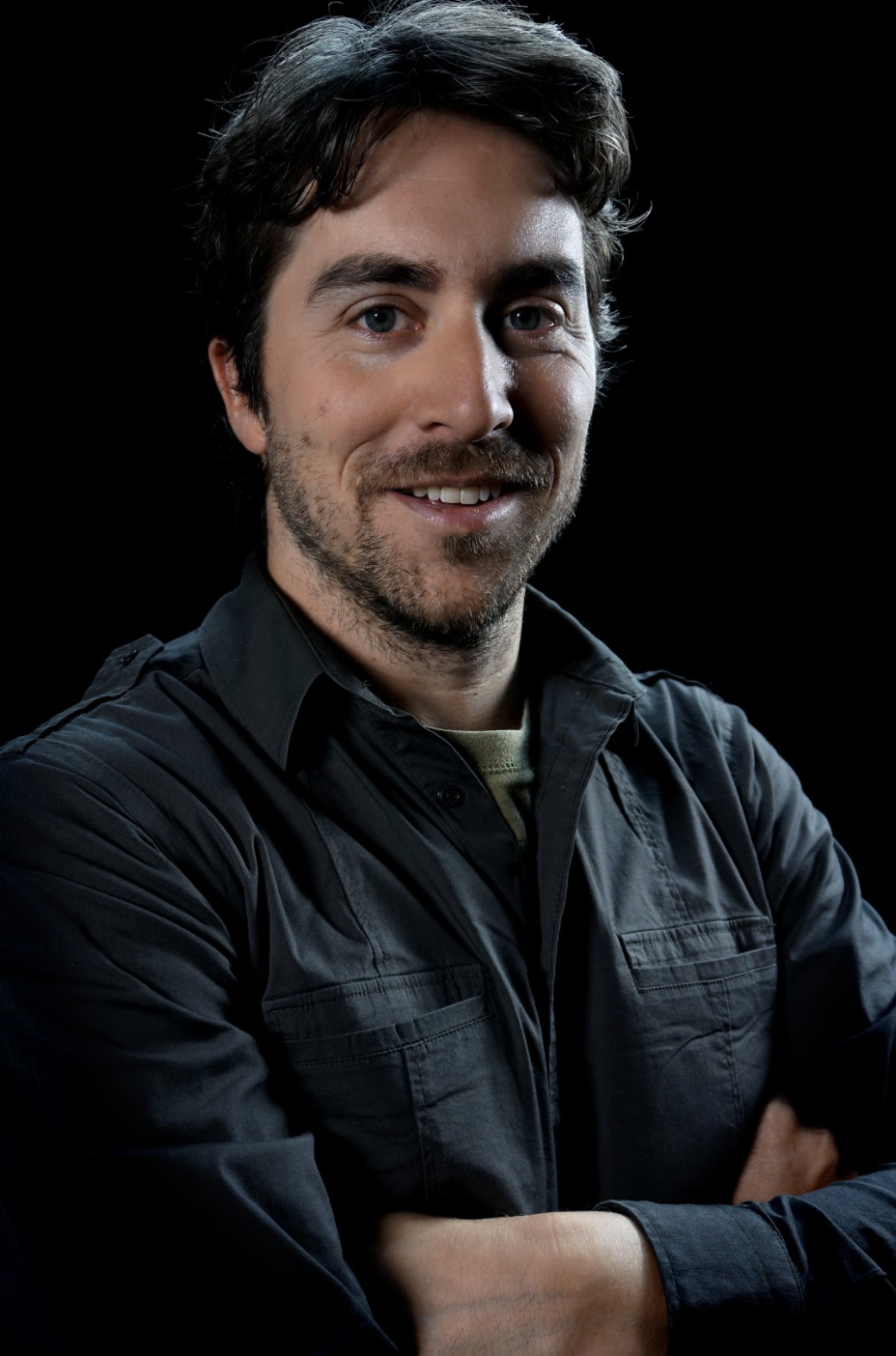
Camiel Zwart
2006年にオランダ映画アカデミーを卒業してから14年以上、映画監督として活動しています。 映画は動きの優美さがあってこそ存在するものだと思っています。それがなければ、写真との区別がつきません。ダンスでも、動きは物語を語る上で重要な要素です。2つのアート手法の組み合わせは、非常に強固なストーリーテリングにつながります。私はこれまで多くのダンス映画を監督してきましたが、いずれも映画祭などで好評を博しました。そのうちのひとつである「13番線」は、全世界70以上の映画祭に選出され、14の賞を受賞しました。ドキュメンタリーに学んだ者として、私は常に社会問題に取り組んでいます。最新の2作品では、オランダの学校制度における隔離と、借金を抱えた若者たちについて扱いました。私はいつも、自分が取り上げたテーマについての議論を促し、社会の変化を起こすことを目指しています。ドキュメンタリー作品は、IDFA、TIFF、Prix Europaなどの映画祭で上映されました。監督業以外にも、自身でプロダクション会社 Blackframe を経営し、Cinedanceでダンス映画ワークショップの講師も務めています。
Camiel Zwart
I’ve been working as a film director for more than 14 years, ever since I graduated from the Dutch Film Academy in 2006. I feel that film only exists with the grace of motion. Without it, it I could just as well be a picture. In dance, movement also is the key element of telling a story. When you put the two art forms together you create a very powerful combination of storytelling. I’ve directed many dance films, all well received on the festival circuit. One of them, Platform 13, was selected for more than 70 festivals worldwide and won about 14 awards. Schooled in the documentary tradition, I always address social issues. My last two films were about segregation in the Dutch school system and young people in debt. I always aim at sparking a debate or initiating social change in the subjects I address. My documentaries have been shown at festivals such as IDFA, TIFF and Prix Europa. Besides directing I also run my own production company Blackframe and I work as a dance film workshop instructor for Cinedans.
